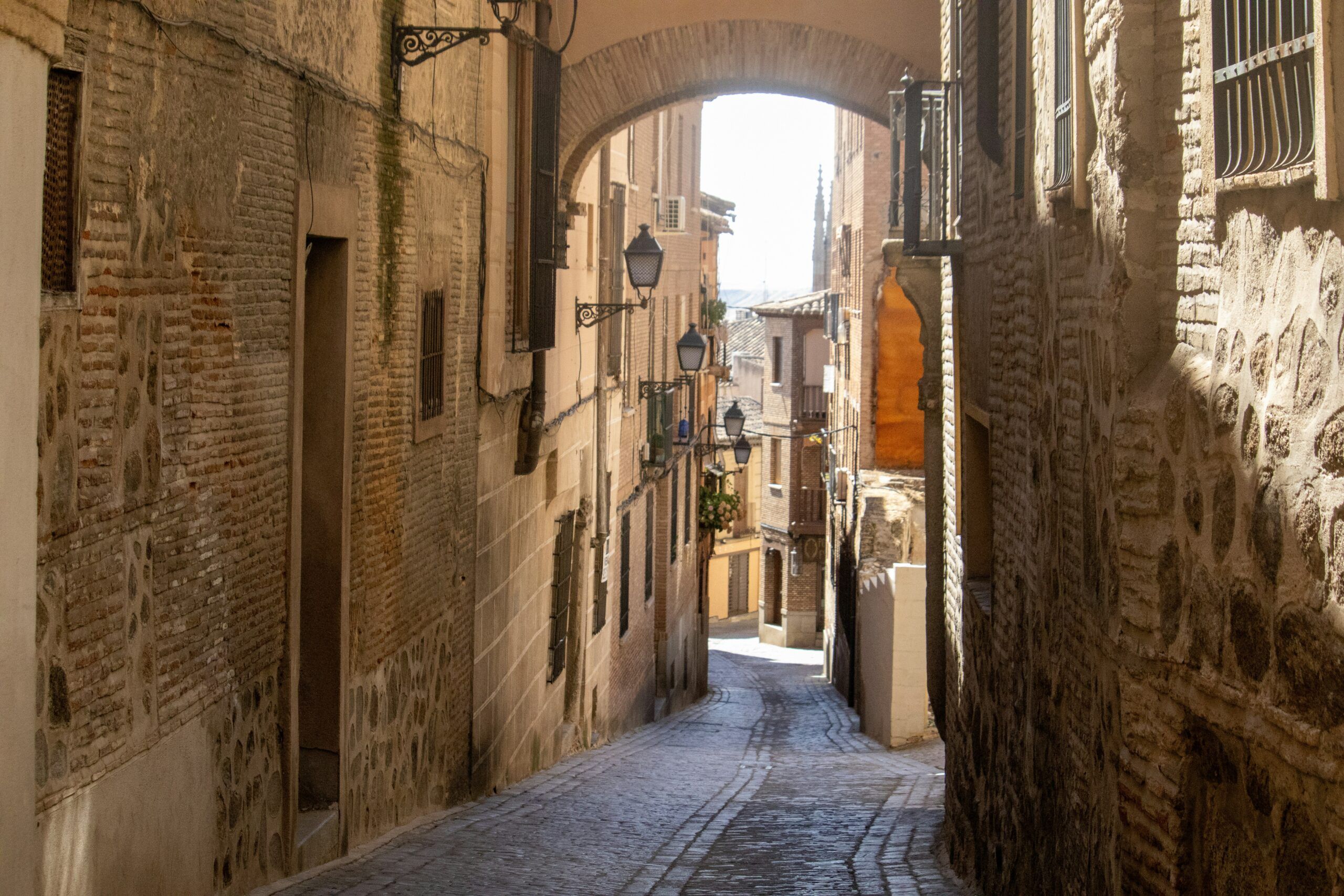Cross the Puente de Alcántara at dusk and the plaza-lit inclines of Toledo fold into a honeyed quiet that feels, at first, almost theatrical. The city — three religions once compressed into a single, acrobatic urban grotto — keeps its most intimate rooms behind discreet doors. One of them is the Sinagoga del Tránsito, whose carved plasterwork and cedar ceiling read like a manifesto of medieval taste.
For a few evenings each year (and sometimes for curated private events), the great prayer hall is opened after dark and lit not as a museum object but as an acoustic chamber: singers perform Sephardic laments and lullabies; the carved mihrab-like apse throws arabesques of shadow across ochre walls. It is not spectacle so much as restoration — of a soundworld, of an emotional architecture. If you travel for the kind of small, precise astonishments that stick in the memory, schedule one of these nocturnal visits first.
Toledo was, for centuries, a fulcrum of Iberian Jewish culture. The medieval judería occupied a substantial portion of the walled city and produced an impressive corpus of Jewish scholarship, commerce, and craft until the expulsions of the late fifteenth century.
The city’s surviving monuments — notably the Sinagoga del Tránsito (now the Museo Sefardí) and the evocative Sinagoga de Santa María la Blanca — are not only architectural treasures but condensed narratives of convivencia: the push-and-pull of mudéjar ornament and Hebrew liturgy, Christian retitling and modern museography. The Red de Juderías de España highlights Toledo as one of its foundational members for good reason: the physical palimpsest here is unusually legible.
 The singular activity: an after-hours experience in the Sinagoga del Tránsito
The singular activity: an after-hours experience in the Sinagoga del Tránsito
What to do: arrange (through the Museo Sefardí or a reputable local guide) an after-hours visit to the Sinagoga del Tránsito that includes a short, live program of Sephardic music or a curator-led explanation by lamplight. Where the daytime visitor sees carved plaster and a high, coffered cedar roof, the nocturnal visitor hears the acoustic geometry — soft contralto lines, the long vowels of Ladino — settle into the room the way seasoning settles into food. These are not nightly performances but curated events (special concerts, themed evenings, theatricalized visits) that appear on seasonal calendars or as part of Red de Juderías programming; when they happen they transform the monument from “object” into a living set piece.
Why it’s special: Toledo’s synagogue is architecturally sumptuous — a single nave with a pierced clerestory and rare, ultra-fine stucco friezes — but at night the same surfaces return different meanings. The low-lit space amplifies voices, makes the ornament seem to breathe; the experience feels like a recovery of sound and use rather than a mere showing. For cultured travelers who want more than photos, this is where resonance (literal and historical) is rendered visible again.
How to book: check the Museo Sefardí’s events/reservations page and the Toledo municipal tourist office (seasonal events and guided tours are often listed there). If you prefer a private arrangement (for a small party), contact the museum or a certified guide in advance; municipal regulations and capacity limits mean advance reservation is essential.
 Best time: late spring–early autumn for clearer scheduling (and to avoid the city’s busiest winter pilgrimages). Plan for the visit to last 45–75 minutes if it includes a short performance and curator talk.
Best time: late spring–early autumn for clearer scheduling (and to avoid the city’s busiest winter pilgrimages). Plan for the visit to last 45–75 minutes if it includes a short performance and curator talk.
What else to see & do
Museo Sefardí / Sinagoga del Tránsito: more than architecture; the permanent displays trace the longue durée of Sephardic life — ritual objects, textiles, manuscripts. Reserve tickets in advance for peak season.
Sinagoga de Santa María la Blanca: a short walk within the judería, this converted synagogue remains a pristine example of mudéjar space with its delicate capitals and repeating horseshoe arches.
A theatricalized walking tour of the Judería: the Red de Juderías and local companies occasionally run evening guided visits that mix history, dramatised episodes, and stops at artisan workshops. These tours provide a narrative through-line for the quarter’s tightly packed anecdotes.
Dining: seek out a tavern that takes local Manchego ingredients seriously — but ask if the chef interprets Sephardic recipes (preserved Ladino cookbooks and salads with preserved citrus are a good place to start).







